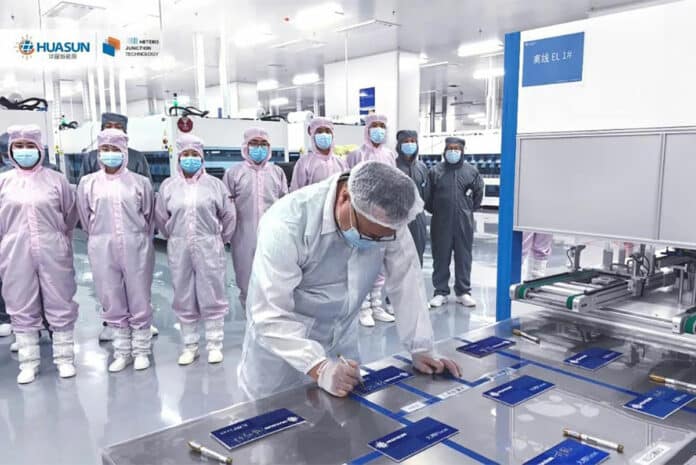The world is moving towards a new green power resolution, and solar energy is the most sustainable and affordable way to produce clean energy. However, solar cells are not very efficient and cannot use all the sunlight to convert into electricity. Many companies are modifying solar cells to make them more efficient so that they can generate more energy from the solar cells.
Chinese solar module manufacturer Anhui Huasun Energy has announced that it has completed the Huasun Dali 2.5GW Phase I HJT cell project and successfully produced the first batch of 210mm heterojunction (HJT) solar cells on September 6.
Huasan claims it has achieved a high efficiency of 25.69% from its new heterojunction (HJT) solar module and expects to maintain the average efficiency of 25.5% in mass production while setting a benchmark for heterojunction technology and the broader photovoltaic industry.
Additionally, Huasun Dali’s 210mm HJT cells guarantee high efficiency for assisted solar module projects, gradually aiming to achieve an average power output of 720W+.
The new HJT cell is equipped with double-sided micro-crystalline processing and silver-copper paste technology so that it can perform well even in harsh environments such as high altitude and high UV rays.
Huasun’s 700W+ HJT modules, with high efficiency and good reliability, can effectively help reduce the balance of system (BOS) cost and the levelized cost of electricity (LCOE) for solar plants.
Xu Xiaohua, Chairman of Huasun, said at the launching ceremony, “I hope that Hausun will continue to stay ahead of the game and endeavor to make the Dali base the most advanced photovoltaic factory in Southwest China, soaring like an eagle over the Cangshan Mountains and the Erhai Lake.”
Lastly, Huasun is committed to providing various high-efficiency HJT solar products in Yunnan, Southeast Tibet, and the Mekong River region, contributing to reduced LCOE and increased Internal Rate of Return (IRR) for large-scale solar power projects in neighboring areas.
